Rare ‘New Spain’ Spanish Colonial Mexico Table Cabinet
A Rare ‘New Spain’ Spanish Colonial Mexico Table Cabinet Decorated with Geometric Star Inlays of Tortoiseshell Bone and Ebony with Strap Hinges and Central Lock Plate of Gilded Chased Brass
The two doors opening to reveal an interior similarly inlaid with seventeen drawers and one secret compartment the inside door panels later painted with scenes after Antoine Watteau (1684 - 1721)
The top and sides also inlaid the back decorated with rosewood trellis marquetry
Standing on four turned ebony feet
The cabinet late 17th Century
The door panels painted in Europe circa 1720
Size: 66cm high, 70cm wide, 53cm deep - 26 ins high, 27½ ins wide, 21 ins deep
The two doors opening to reveal an interior similarly inlaid with seventeen drawers and one secret compartment the inside door panels later painted with scenes after Antoine Watteau (1684 - 1721)
The top and sides also inlaid the back decorated with rosewood trellis marquetry
Standing on four turned ebony feet
The cabinet late 17th Century
The door panels painted in Europe circa 1720
Size: 66cm high, 70cm wide, 53cm deep - 26 ins high, 27½ ins wide, 21 ins deep
The conquest of Latin America, attempts to convert indigenous people to Catholicism, and the development of vast territories presented an unprecedented challenge to European authorities and the Church. The abundant natural resources of the newly discovered land financed the Europeans monumental enterprise and created favourable conditions of the development of industrial arts in the European style. From the beginning European artists established themselves in the new settlements and began producing household goods and furniture. In many cases joiners came to Latin America as part of a ship’s crew, and as a result joinery was one of the first trades to be practised. They followed European methods and customs and established guilds modelled on those of Spain and Portugal. In Mexico, the master’s joiners guild was given its first ordinance in 1548.
European furniture was logistically difficult to import, expensive and vulnerable to tropical insect attack. These factors stimulated the development of workshops capable of meeting local demand. Indigenous workers were frequently employed and placed under the guidance of master craftsmen most of whom were educated and trained in Europe. The marquetry of contrasting woods, the inlays of tortoiseshell and the bone motifs of Spanish colonial Mexican furniture were undoubtedly influenced by the decorative repertoire of Mudéjar art which employs eight pointed stars in geometric patterns arranged across flat surfaces.
European furniture was logistically difficult to import, expensive and vulnerable to tropical insect attack. These factors stimulated the development of workshops capable of meeting local demand. Indigenous workers were frequently employed and placed under the guidance of master craftsmen most of whom were educated and trained in Europe. The marquetry of contrasting woods, the inlays of tortoiseshell and the bone motifs of Spanish colonial Mexican furniture were undoubtedly influenced by the decorative repertoire of Mudéjar art which employs eight pointed stars in geometric patterns arranged across flat surfaces.
Rare ‘New Spain’ Spanish Colonial Mexico Table Cabinet
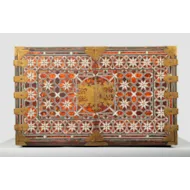
SOLD

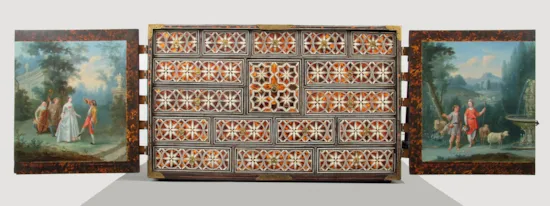
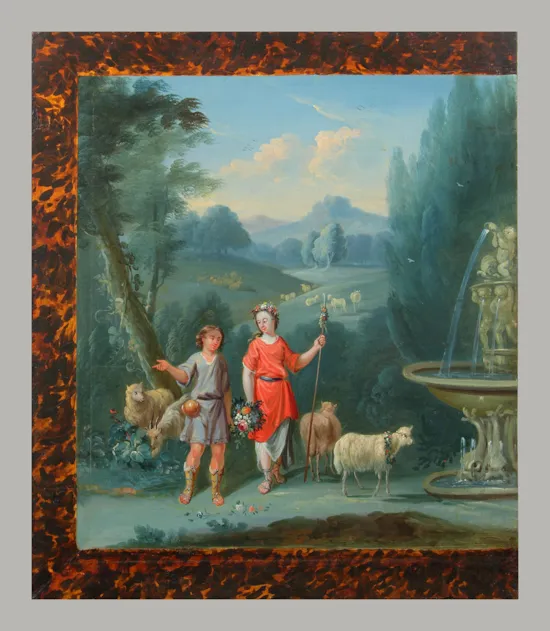
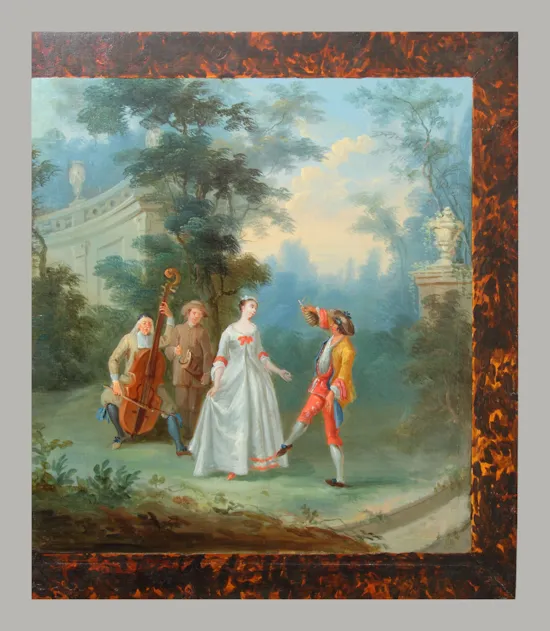
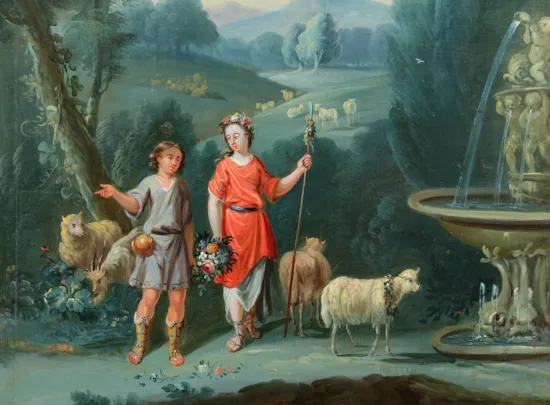
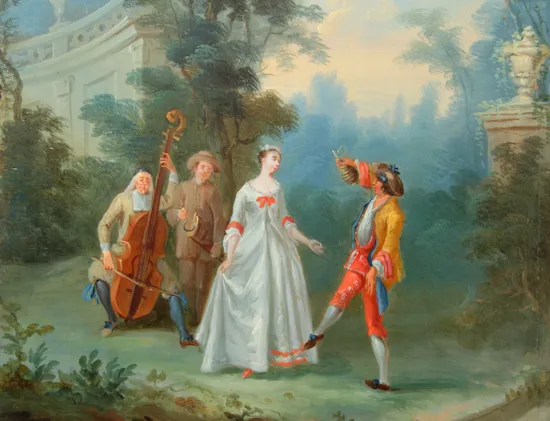
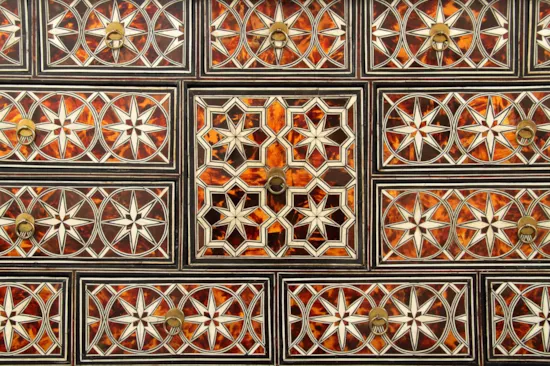
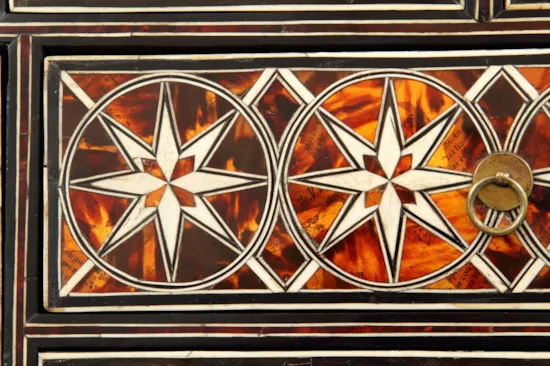
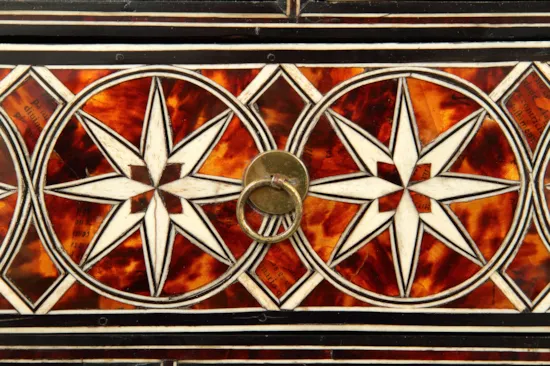
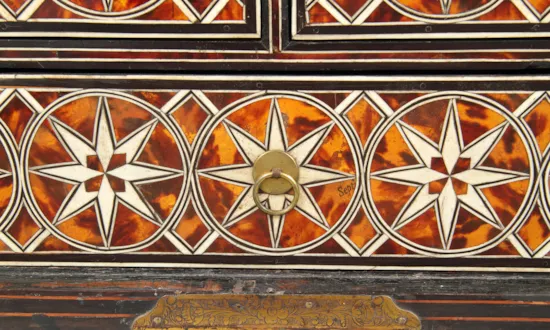
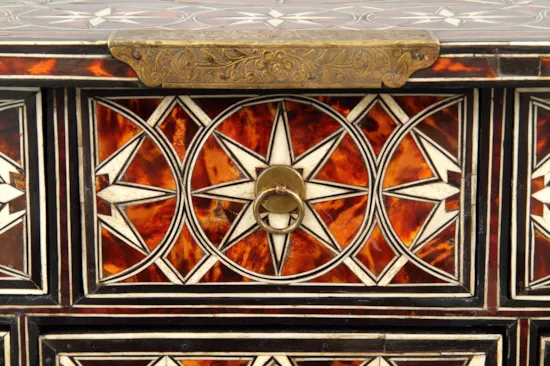
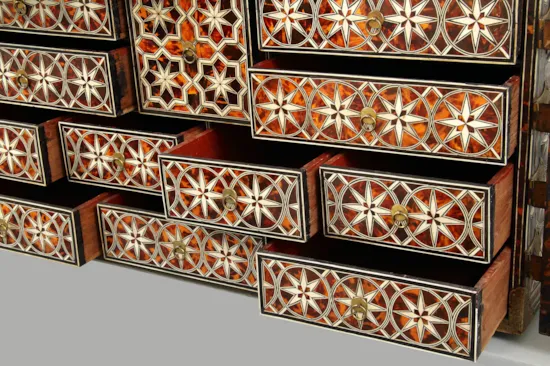
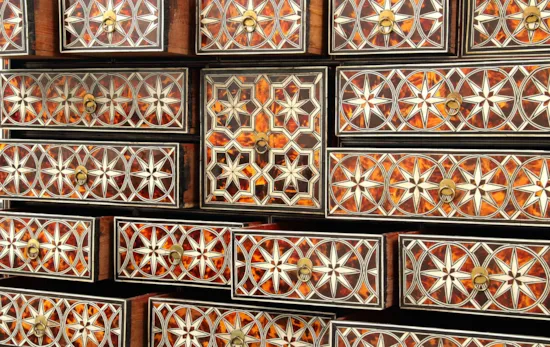
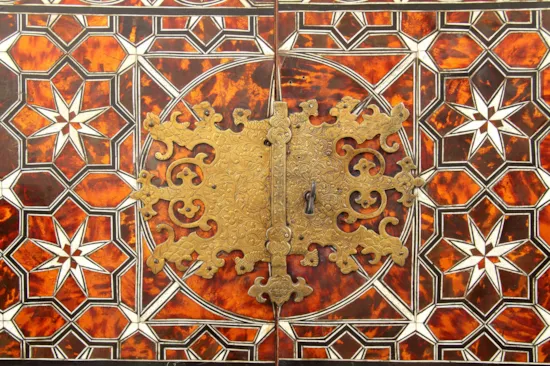
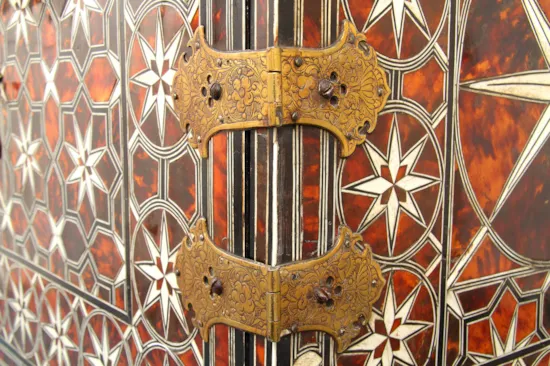
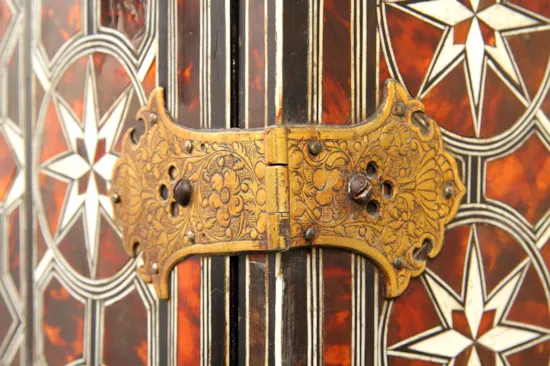
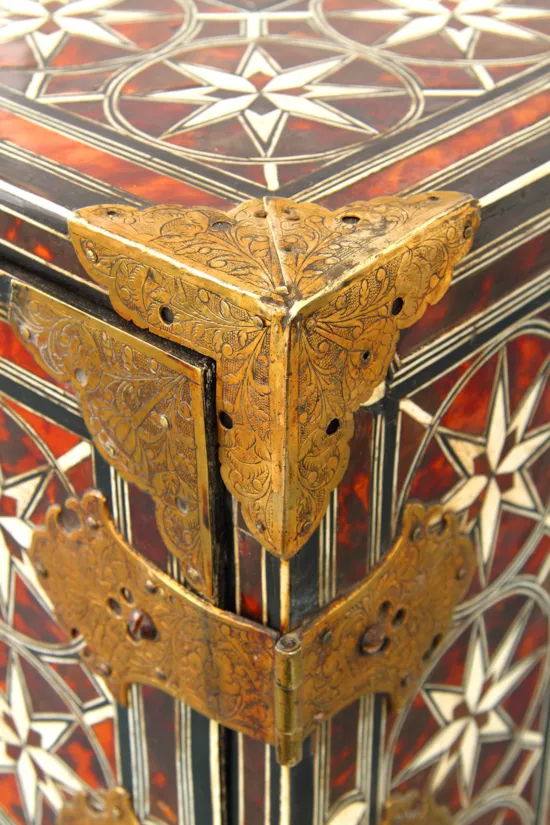
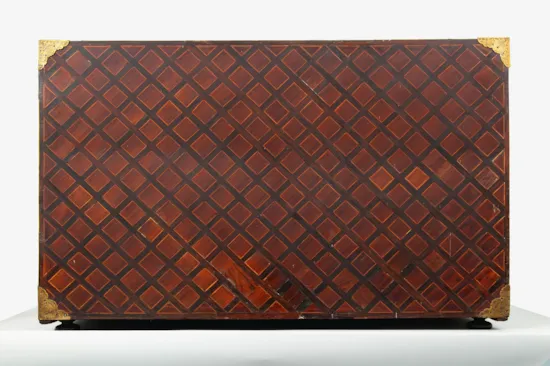
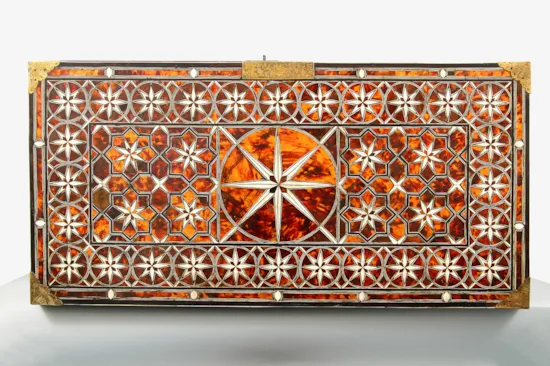
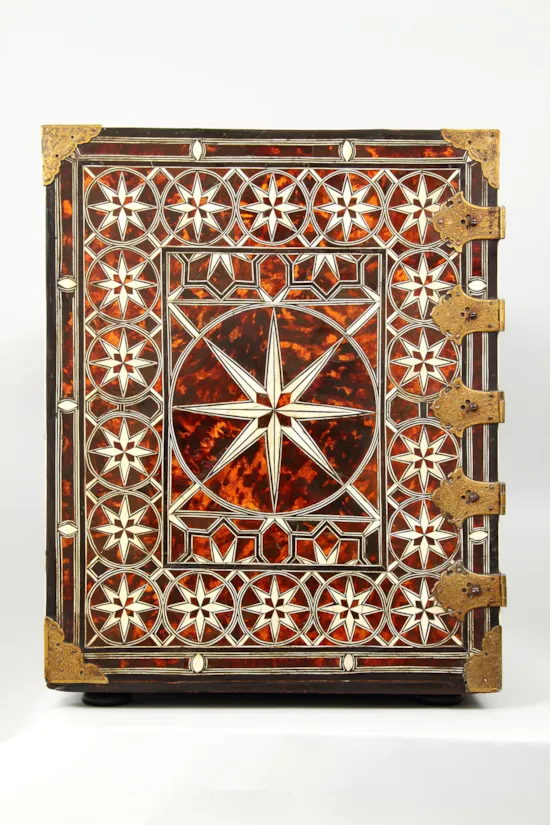
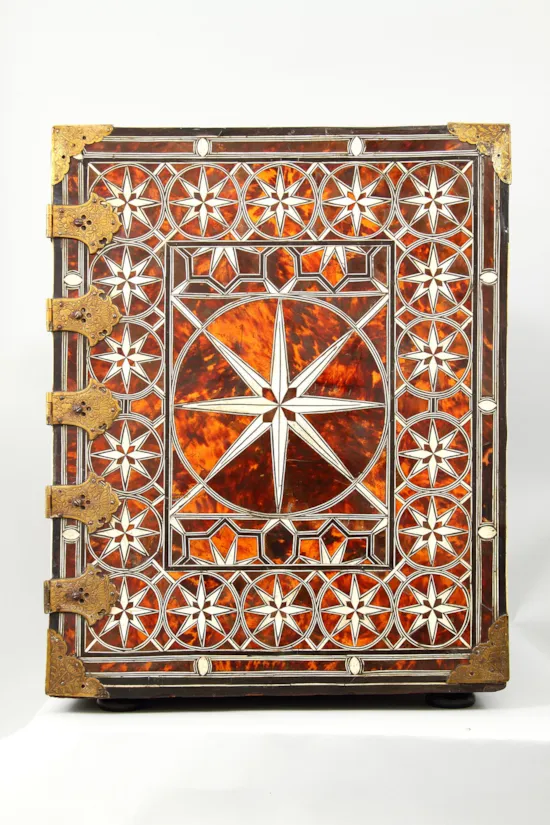





















YOU MAY ALSO LIKE

